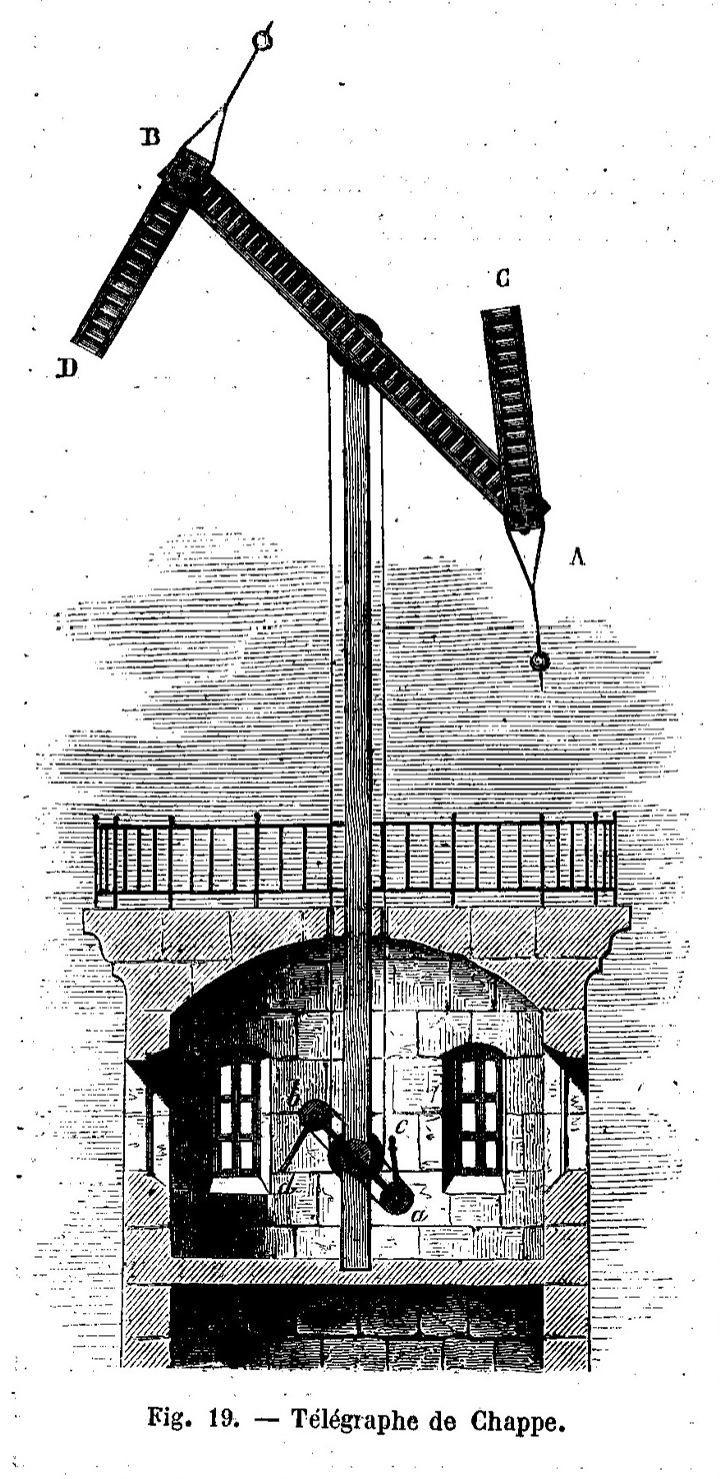An operator would convey information by adjusting the position of the indicator arms to different positions. A coded vocabulary was also created. Using a telescope, an operator at a receiving tower, would decipher the code of the indicator arm using a Semaphore System Code Book and would then forward the message on to the next tower until the message reached its final destination.
In 1791, primary French inventor Claude Chappe and his brothers, demonstrated the practical use of the semaphore system. In French, the Chappes called the system, “tachygraphe”, derived from Greek for “fast writer.” Eventually it was renamed, in French, to “telegraphe” or telegraph in English, which is derived from Greek, “distant writer.” It was the first mechanical, telecommunications system of the industrial age and was used until 1850 when it was replaced by the electric telegraph.
To learn about Claude Chappe and his Semaphore, click visit source to an article A Historical Twist on Long-Range Wireless: Building a 103 km Multi-Hop Network Replicating Claude Chappe’s Telegraph (Open Source)
The Chappe telegraph as shown in the, Histoire de la télégraphie Chappe, Ignace Urbain Jean in 1840.

